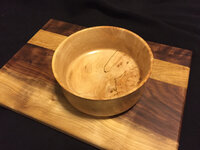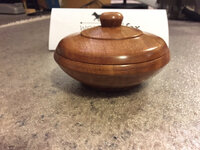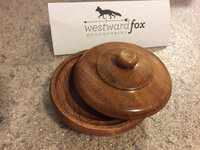Hey all - I've started turning bowls this year along with my pens, and was gifted a Thompson 5/8" V Bowl gouge. I've watched a lot of videos, but don't have a lot of people in my area I can watch and learn from.
I was wondering if anyone knows of any videos or resources for using this shaped gouge specifically. I have a terrible time with catches, or needing to go very slow/shallow. I'm trying to keep the angles right, etc. compared to videos I have seen, but not sure if there is some other trick beyond practice. I watched a couple videos from Brendan Stemp (youturn.tv) that were very helpful, but he appears to have removed them...
Any help would be appreciated!
I was wondering if anyone knows of any videos or resources for using this shaped gouge specifically. I have a terrible time with catches, or needing to go very slow/shallow. I'm trying to keep the angles right, etc. compared to videos I have seen, but not sure if there is some other trick beyond practice. I watched a couple videos from Brendan Stemp (youturn.tv) that were very helpful, but he appears to have removed them...
Any help would be appreciated!



